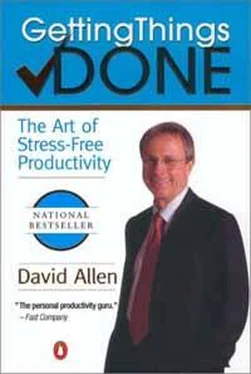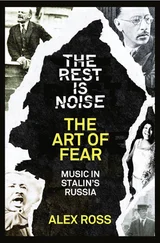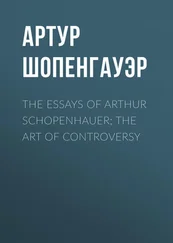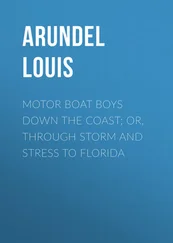The problem with digitizing brainstorming is that for the most part we don't need to save what we brainstorm in the way we brainstormed it—the critical thing is the conclusions we develop from that raw thinking. The slick brainstorming-capture tools, like electronic whiteboards and digital handwriting-copying gear, ultimately will probably not be as successful as the manufacturers hoped. We don't need to save creative thinking so much as we do the structures we generate from it. There are significant differences among collecting and processing and organizing, and different tools are usually required for them. You might as well dump ideas into a word processor.
Project-Planning Applications As I've mentioned, most project-planning software is too rigorous for the majority of the project thinking and planning we need to do. Over the years I've seen these programs more often tried and discontinued than utilized as a consistent tool. When they're used successfully, they're usually highly customized to fit very specific requirements for the company or the industry.
I anticipate that less structured and more functional applications will emerge in the coming years, based on the ways we naturally think and plan. Until then, best stick with some good and simple outliner.
Attaching Digital Notes
If you are using a digital organizer, much of the project planning you need to capture outside your head can in fact be satisfactorily managed in an attached note field. If you have the project itself as an item on a list on a Palm, or as a task in Microsoft Outlook, you can open the accompanying "Note" section and jot ideas, bullet points, and subcomponents of the project. Just ensure that you review the attachment appropriately to make it useful.
How Do I Apply All This in My World?
Just as your "Next Actions" lists need to be up-to-date, so, too, does your "Projects" list. That done, give yourself a block of time, ideally between one and three hours, to handle as much of the "vertical" thinking about each project as you can.
Clear the deck, create a context, and do some creative project thinking. You'll then be way ahead of most people.
At the very least, right now or as soon as possible, take those few of your projects that you have the most attention on or interest in right now and do some thinking and collecting and organizing on them, using whatever tools seem most appropriate.
Focus on each one, one at a time, top to bottom. As you do, ask yourself, "What about this do I want to know, capture, or remember?" You may just want to mind-map some thoughts on a piece of paper, make a file, and toss the paper into it. You may come up with some simple bullet-point headings to attach as a "note" in your software organizer. Or you could create a Word file and start an outline on it.
Let our advance worrying become advance thinking and -planning.
- Winston
The key is to get comfortable with having and using your ideas. And to acquire the habit of focusing your energy constructively, on intended outcomes and open loops, before you have to.
Part 3. The Power of the Key Principles
11. The Power of the Collection Habit
THERE'S MUCH MORE to these simple techniques and models than may appear at first glance. Indeed, they offer a systematic method to keep your mind distraction-free, ensuring a high level of efficiency and effectiveness in your work. That in itself would be sufficient reason to implement these practices.
But there are even greater implications for the fundamental principles at work here. What follows in the next three chapters is an accounting of my experience, over the last twenty years, of the subtler and often more profound effects that can transpire from the implementation of these basic principles. The longer-term results can have a significant impact on you as an individual, and they can positively affect larger organizational cultures as well.
When people with whom you interact notice that without fail you receive, process, and organize in an airtight manner the exchanges and agreements they have with you, they begin to trust you in a unique way. Such is the power of capturing placeholders for anything that is incomplete or unprocessed in your life. It noticeably enhances your mental well-being and improves the quality of your communications and relationships, both personally and professionally.
The Personal Benefit
How did it feel to go through the collecting and downloading activity? Most people say it feels so bad, and yet feels so good. How can that be?
If you're like most people who go through the full collection process, you probably felt some form of anxiety. Descriptive terms like "overwhelmed," "panic," "frustration," "fatigue," and "disgust" tend to come up when I ask seminar participants to describe their emotions in going through a minor version of this procedure. And is there anything you think you've procrastinated on in that stack? If so, you have guilt automatically associated with it—"I could have, should have, ought to have (before now) done this."
At the same time, did you experience any sense of release, or relief, or control as you were did the drill? Most people say yes, indeed. How does that happen? Totally opposite emotional states showing up as you're doing a single exercise, almost at the same time—anxiety and relief; overwhelmed and in control. What's going on here?
When you understand the source of your negative feelings about all your stuff, you'll discover, as I did, the way to get rid of them. And if you experienced any positive feelings from collecting your stuff, you actually began the process of eliminating the negativity yourself.
The Source of the Negative Feelings
Where do the not-so-good feelings come from? Too much to do? No, there's always too much to do. If you felt bad simply because there was more to do than you could do, you'd never get rid of that feeling. Having too much to do is not the source of the negative feeling. It comes from a different place.
How have you felt when someone broke an agreement with you? Told you they would meet you Thursday at 4:00 P.M. and never showed or called? How did that feel? Frustrating, I imagine. The price people pay when they break agreements in the world is the disintegration of trust in the relationship—a negative consequence.
But what are all those things in your in-basket? Agreements you've made with yourself. Your negative feelings are simply the result of breaking those agreements—they're the symptoms of disintegrated self-trust If you tell yourself to draft a strategic plan, when you don't do it, you'll feel bad. Tell yourself to get organized, and if you fail to, welcome to guilt and frustration. Resolve to spend more time with your kids and don't—voila! anxious and overwhelmed.
The sense of anxiety and guilt doesn't come from having too much to do; it's the automatic result of breaking agreements with yourself.
How Do You Prevent Broken Agreements with Yourself?
If the negative feelings come from broken agreements, you have three options for dealing with them and eliminating the negative consequences:
• Don't make the agreement.
• Complete the agreement.
• Renegotiate the agreement.
All of these can work to get rid of the unpleasant feelings.
Don't Make the Agreement
It probably felt pretty good to take a bunch of your old stuff,decide that you weren't going to do anything with it, and just toss it into the trash. One way to handle an incompletion in your world is to just say no!
You'd lighten up if you would just lower your standards. If you didn't care so much about things being up to a certain level—your parenting, your school system, your team's morale, the software code—you'd have fewer things to do. [14] It has been a popular concept in the self-help world that focusing on your values will simplify your life. I contend the opposite: the overwhelming amount of things that people have to do comes from their values. Values are critical elements for meaning and direction. But don't kid yourself—the more you focus on them, the more things you're likely to feel responsible for taking on. Your values may make it easier for you to make decisions, but don't think they'll make things any simpler.
Читать дальше











